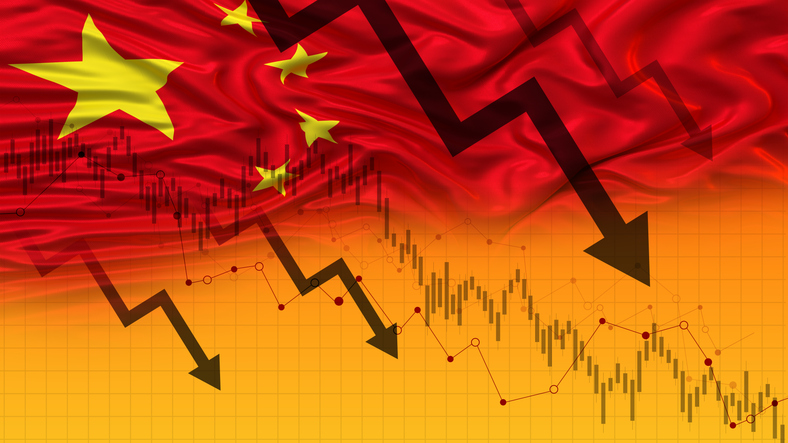USA Inflation on the Rise Amid Global Economic Challenges: A Crucial Fed Decision Looms
As the world grapples with a confluence of economic headwinds, the United States finds itself at the center of a delicate balancing act. While inflation is making a subtle but steady comeback in the U.S., global conditions—marked by China’s deflation, India’s slowing GDP growth, Europe’s deepening economic troubles, and the potential return of Trump-era tariffs—add layers of complexity to the Federal Reserve’s upcoming decisions on interest rates. The stakes couldn’t be higher, as the Fed’s actions will resonate far beyond America’s borders, shaping the trajectory of the global economy.

The Silent Return of U.S. Inflation
After a period of relative stability, U.S. inflation is quietly regaining momentum. The Consumer Price Index (CPI) has shown incremental increases in recent months, driven by factors such as rising energy costs, housing market pressures, and persistent wage growth in a tight labor market. Core inflation, which excludes volatile food and energy prices, remains stubbornly high, a clear indication that underlying inflationary pressures are far from subdued.
The resurgence of inflation is rekindling memories of the Federal Reserve’s aggressive rate hikes between 2022 and 2023, which were aimed at taming inflation that had reached multi-decade highs. While those measures initially seemed effective, the current uptick underscores the challenges of achieving sustained price stability. With inflation still above the Fed’s 2% target, policymakers face a critical question: Should they hold firm on rates or prepare for cuts to support a slowing economy?

China’s Deflationary Spiral
Across the Pacific, China is grappling with a deflationary environment that poses its own set of risks. Weak consumer demand, falling producer prices, and a property market in crisis have led to declining price levels, signaling a slowdown in the world’s second-largest economy. This deflationary trend is not only a domestic concern but also a global one, given China’s pivotal role in global trade and supply chains.
Deflation in China exerts downward pressure on global inflation, complicating the Federal Reserve’s task. On one hand, lower import prices could provide some relief to American consumers. On the other hand, prolonged deflation in China could lead to reduced global demand, potentially tipping other economies into recession and curbing U.S. export growth.

India’s Slowing Growth: A Warning Sign?
India, often heralded as a bright spot in a sluggish global economy, is beginning to show signs of deceleration. The country’s GDP growth, while still robust compared to most developed economies, is losing momentum due to weaker domestic consumption, declining export demand, and the impact of high interest rates. Industrial output has also taken a hit, with key sectors like manufacturing and construction showing slower expansion.
For the U.S., India’s slowdown is a mixed bag. While it may temper global commodity prices, easing inflationary pressures, it also raises concerns about reduced demand for American goods and services in one of the world’s fastest-growing markets. As India’s growth trajectory wavers, it adds another layer of uncertainty to the global economic outlook.

Europe’s Economic Woes
Europe is confronting a litany of economic problems that are dragging down growth across the continent. High energy costs, partly due to geopolitical tensions and the ongoing war in Ukraine, are straining households and businesses. Meanwhile, sluggish productivity, aging populations, and persistent structural issues continue to weigh on the region’s economic performance.
The Eurozone’s core economies, including Germany and France, are teetering on the brink of recession, with shrinking industrial output and weak consumer spending. The European Central Bank (ECB) has been cautious in its approach, balancing the need for monetary tightening against the risk of deepening the economic slump.
Europe’s struggles have a direct bearing on the U.S. economy. As a major trading partner, a prolonged downturn in Europe could hurt American exports and contribute to global financial instability, further complicating the Fed’s decision-making process.

The Shadow of Trump-Era Tariffs
Adding another twist to the economic narrative is the specter of a potential return to Trump-era tariffs. Former President Donald Trump, a frontrunner for the 2024 Republican nomination, has already signaled his intent to reimpose tariffs on Chinese goods and possibly expand them to other trading partners. Such a move would have significant ramifications for the U.S. and global economies.
Tariffs act as a double-edged sword. While they aim to protect domestic industries, they also raise costs for consumers and businesses. A reintroduction of tariffs could exacerbate inflationary pressures in the U.S., forcing the Federal Reserve to maintain higher interest rates for longer. Moreover, retaliatory measures by trading partners could disrupt global supply chains and dampen international trade, adding to economic uncertainty.
The Fed’s Dilemma
Against this multifaceted backdrop, the Federal Reserve’s upcoming decisions on interest rates carry enormous weight. On one hand, there are calls for rate cuts to counteract slowing economic growth and potential recession risks. On the other hand, a premature easing of monetary policy could reignite inflation, undermining the progress made so far.
Fed Chair Jerome Powell has consistently emphasized a data-driven approach, highlighting the importance of assessing incoming economic indicators. However, the interconnected nature of today’s global economy means that the Fed must also consider external factors, such as China’s deflation, India’s growth slowdown, and Europe’s economic struggles. Balancing domestic and international considerations is no small feat.
Potential Scenarios and Implications
The Fed’s decision-making process will likely hinge on a few key scenarios:
- Holding Rates Steady: Maintaining current interest rates would signal the Fed’s commitment to combating inflation. However, this approach risks stifling economic growth, especially if external pressures intensify.
- Rate Cuts: Lowering rates could provide short-term relief to the economy, boosting consumer spending and business investment. However, it could also undermine the fight against inflation, leading to long-term instability.
- Incremental Hikes: While unlikely, the Fed could consider additional rate hikes if inflationary pressures escalate. This approach would prioritize price stability but could tip the economy into recession.
Each scenario carries its own set of risks and trade-offs, underscoring the complexity of the Fed’s task.
Conclusion: A Precarious Path Forward
As the Federal Reserve prepares for its next move, it finds itself navigating an increasingly precarious economic landscape. The silent rise of U.S. inflation, coupled with global challenges such as China’s deflation, India’s slowing growth, Europe’s economic woes, and the potential return of Trump-era tariffs, creates a perfect storm of uncertainty.
The Fed’s decision will not only shape the U.S. economy but also set the tone for global markets. In such a high-stakes environment, policymakers must tread carefully, weighing the immediate needs of the economy against the long-term goal of stability. One thing is certain: the world will be watching closely, as the Fed’s actions could very well determine the trajectory of the global economy in the months and years to come.









